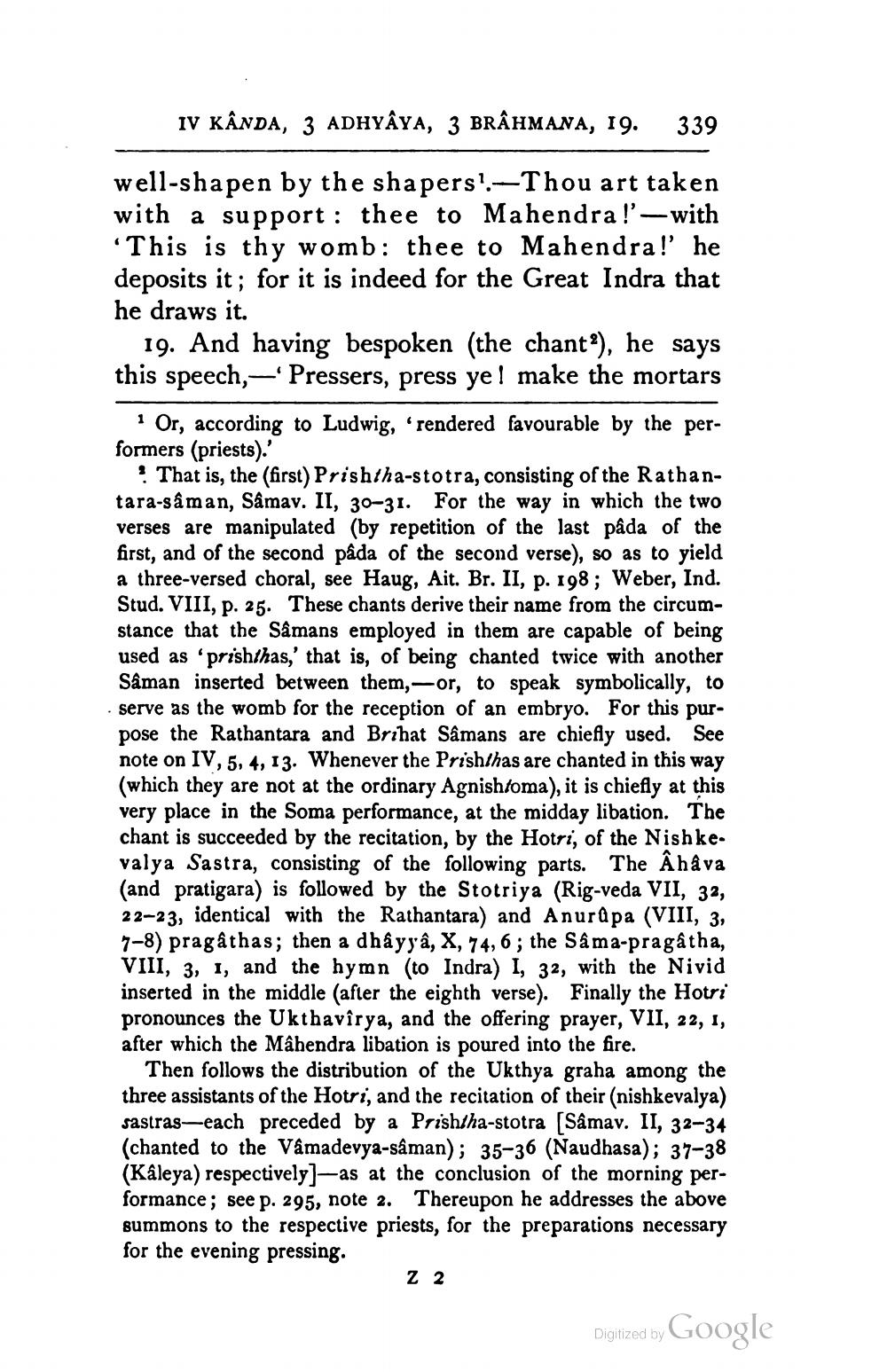________________
IV KÂNDA, 3 ADHYAYA, 3 BRAHMANA, 19.
339
well-shapen by the shapers!.-Thou art taken with a support: thee to Mahendra!'-— with 'This is thy womb: thee to Mahendra!' he deposits it; for it is indeed for the Great Indra that he draws it.
19. And having bespoken (the chant), he says this speech, — Pressers, press yel make the mortars
Or, according to Ludwig, rendered favourable by the performers (priests).'
? That is, the (first) Prishtha-stotra, consisting of the Rathantara-saman, Samav. II, 30-31. For the way in which the two verses are manipulated by repetition of the last pâda of the first, and of the second pâda of the second verse), so as to yield a three-versed choral, see Haug, Ait. Br. II, p. 198; Weber, Ind. Stud. VIII, p. 25. These chants derive their name from the circumstance that the Sâmans employed in them are capable of being used as 'prishthas,' that is, of being chanted twice with another Saman inserted between them,- or, to speak symbolically, to serve as the womb for the reception of an embryo. For this purpose the Rathantara and Brihat Sâmans are chiefly used. See note on IV, 5, 4, 13. Whenever the Prishlhas are chanted in this way (which they are not at the ordinary Agnishtoma), it is chiefly at this very place in the Soma performance, at the midday libation. The chant is succeeded by the recitation, by the Hotri, of the Nishke. valya Sastra, consisting of the following parts. The Ahava (and pratigara) is followed by the Stotriya (Rig-veda VII, 32, 22-23, identical with the Rathantara) and Anurpa (VIII, 3, 7-8) pragathas; then a dhãy yâ, X, 74,6; the Sâma-pragatha, VIII, 3, 1, and the hymn (to Indra) I, 32, with the Nivid inserted in the middle (after the eighth verse). Finally the Hotri pronounces the Ukthavîrya, and the offering prayer, VII, 22, 1, after which the Mahendra libation is poured into the fire.
Then follows the distribution of the Ukthya graha among the three assistants of the Hotri, and the recitation of their (nishkevalya) sastras—each preceded by a Prishtha-stotra (Sâmav. II, 32–34 (chanted to the Vámadevya-saman); 35-36 (Naudhasa); 37-38 (Kaleya) respectively]-as at the conclusion of the morning performance; see p. 295, note 2. Thereupon he addresses the above summons to the respective priests, for the preparations necessary for the evening pressing.
Z 2
Digitized by Google




